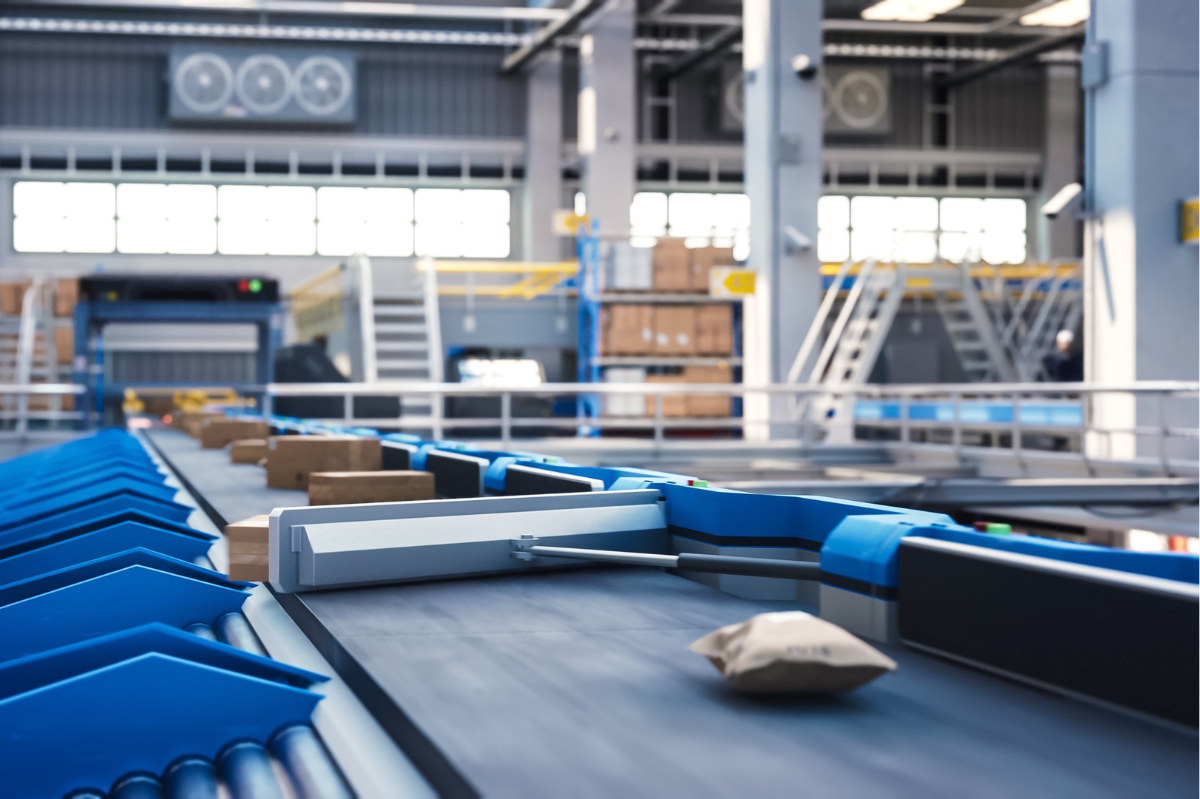Most ecommerce teams hit a point where growth outpaces the systems they’ve built. What once functioned smoothly at 500 orders a month becomes strained by 5,000. By 50,000, fulfillment becomes a strategic risk if the shipping tech stack hasn’t been built for scale.
Many retailers face these scaling challenges as their order volumes grow, making it a widespread issue across the industry.
Scaling isn’t about piling on software or chasing automation for automation’s sake. It’s about creating a stable operational architecture—one that minimizes friction, handles complexity without adding more of it, and gives teams control as volume increases.
This guide outlines the key components of a scalable shipping tech stack, from foundational decisions to advanced functionality. These are the capabilities growth-stage brands must get right to transition from a reactive shipping operation to a proactive fulfillment infrastructure.
1. Understanding Fulfillment Capabilities
Shipping volume is only one signal. As your monthly order count increases, the complexity of your fulfillment network often grows faster. SKUs multiply, warehouses diversify, and the operational surface area expands across platforms and partners.
Typical shifts by order volume:
- 500–2,000/month: Reliance on a single warehouse, limited automation, single-carrier use. This centralization can create operational fragility, longer delivery times, and higher costs. Often reliant on out-of-the-box ecommerce platform features.
- 2,000–15,000/month: Multi-node fulfillment begins, need for routing logic, carrier rate optimization, and deeper platform integrations.
- 15,000–50,000+/month: Regional carrier mix, 3PL orchestration, real-time inventory sync, and API-driven workflows.
Transitioning from a single warehouse to multiple fulfillment centers enables faster, more efficient distribution and helps manage the increased complexity of higher order volumes. Strategically located fulfillment centers also provide real-time inventory visibility and support business growth by expanding logistics capabilities.
Each stage requires deliberate decisions to avoid disruption during scale. The gap between growth and operational maturity widens fast without systems to bridge it.
2. Choose a Shipping Software Backbone That Can Evolve
Your shipping software is more than a tool to print labels. It’s the operational foundation for fulfillment logic, carrier selection, and system communication. Selecting the right software with key features—such as scalability, automation, and seamless integrations—ensures your business can grow efficiently and adapt to changing demands.
Key criteria for scale:
- Multi-carrier support: Domestic, regional, and international carriers, plus ability to add or sunset carriers without system downtime.
- Custom automation logic: Dynamic rules for service level selection, packaging, insurance, and returns processing.
- Batch processing at volume: Systems that can process hundreds or thousands of orders per minute without rate-limiting or API throttling.
- Seamless integrations: Effortless connection with ecommerce platforms (Shopify, BigCommerce), WMS, OMS, ERP, and custom tools for real-time data exchange and automated workflows.
- Bulk print labels and shipping labels: Ability to bulk print labels and generate shipping labels efficiently, streamlining high-volume operations, saving time, and reducing errors.
Scalability means minimizing constraints. Look for a platform that lets you define how your operation runs, not one that forces you to adapt to fixed workflows.
Learn how VESYL is built for growth, control and seamless fulfillment from checkout to doorstep.
3. Build for Order Routing Precision, Not Just Speed
At scale, fulfillment logic must account for more than speed. Routing the wrong order from the wrong node or assigning the wrong service level directly impacts cost and customer experience. A comprehensive fulfillment system that supports advanced routing, seamless integration, and scaling is essential for efficient operations.
Invest in a stack that enables:
- Zip-code level order routing based on inventory, proximity, SLA, or custom business rules.
- Dynamic fulfillment logic that accounts for split shipments, backorders, or carrier blackout periods.
- Load balancing across nodes or 3PLs to avoid overloading individual facilities or exceeding labor capacity.
- Service level fallbacks that maintain delivery promises when preferred carriers or routes are unavailable.
Choosing a fulfillment provider with robust fulfillment capabilities is critical to support business growth and operational precision. The right partner ensures your fulfillment system can scale, adapt to increasing order volumes, and maintain high service levels.
Precision here isn’t a luxury. It’s a margin protection strategy.
4. Use Integration Architecture to Avoid Operational Silos
Shipping touches almost every system in a high-volume ecommerce operation. A common failure point is when integrations are built reactively—either too late or too rigid. Seamless integrations with existing systems, including accounting software, are essential to ensure smooth data flow and prevent operational silos.
Integrations should facilitate:
- Real-time data flow across your storefront, WMS, ERP, and shipping systems.
- Order status syncing back to the ecommerce platform with tracking and delivery updates.
- Centralized order management and visibility for customer support, finance, and operations teams, improving accuracy and reducing errors.
- Seamless integrations with accounting software and other existing systems to streamline operations.
- Resilience to platform changes, such as API version updates or fulfillment process changes.
Consider using middleware or iPaaS to serve as a buffer between systems. This gives your stack flexibility while maintaining reliability and clean data flow as you scale.
5. Operationalize Shipping Data
Most platforms surface basic data: shipment tracking, carrier costs, delivery status. That’s table stakes. However, analyzing shipping data can provide valuable insights that help improve efficiency and reduce errors in fulfillment operations.
Scalable operations require deeper insight:
- Cost-to-ship analysis by SKU, carrier, destination zone, and packaging type.
- Delivery performance tracking by carrier, region, and time period, not just averages.
- Margin impact modeling that incorporates fulfillment cost into product-level profitability.
- Exception reporting that flags late deliveries, failed handoffs, and fulfillment bottlenecks.
If shipping is one of your top variable expenses, data needs to move from dashboard to decision-making.
6. Design Your Carrier Strategy for Flexibility
Carrier diversification becomes critical at scale—not just for cost savings, but to maintain resiliency.
A scalable tech stack allows you to:
- Compare live carrier rates and transit times across national, regional, and cross-border carriers, optimizing for reduced transit time to improve inventory placement and fulfillment logistics.
- Implement service level selection rules based on cost, delivery promise, or customer segment.
- Deploy regional or last-mile carriers for urban deliveries without building custom routing logic.
- Automate carrier failover during weather disruptions, peak season constraints, or performance dips.
A strong carrier strategy is built on optionality. You don’t want to re-architect your stack every time your network shifts or rates change.
7. Avoid Tool Sprawl and Audit Regularly
One of the easiest traps for growing ecommerce businesses is tool sprawl—adding point solutions to solve short-term problems without long-term integration planning.
A few questions to ask quarterly:
- Are multiple platforms solving overlapping problems (e.g., labeling, tracking, returns)?
- Is there redundancy in automation logic across tools?
- Have we outgrown pricing tiers or usage limits?
- What’s the total cost per order across all fulfillment-related systems?
Tooling should reduce complexity, not hide it. A leaner, more connected stack almost always performs better at scale.
8. Master Inventory Management and Faster Shipping
Effective inventory management is the backbone of a scalable ecommerce operation. As order volumes grow and sales channels multiply, maintaining accurate stock levels across multiple locations becomes increasingly complex.
The right order fulfillment software provides real-time inventory tracking, giving you complete visibility into inventory levels at every warehouse and across all sales channels. This real time inventory tracking helps prevent costly stockouts, overstocking, and lost sales, ensuring that customers always receive the correct products on time.
By automating inventory management, you eliminate manual data entry and reduce the risk of human error, freeing your team from repetitive tasks and allowing them to focus on higher-value activities. Advanced fulfillment software enables you to monitor inventory movement, optimize warehouse operations, and make informed decisions about replenishment and product allocation.
9. Streamline Delivery Tracking
In today’s ecommerce landscape, customers expect to know exactly where their orders are at every stage of the journey. A scalable order fulfillment software should offer seamless integration with major shipping carriers, enabling real time tracking of packages from warehouse to doorstep. This level of delivery tracking not only keeps customers informed but also empowers your team to proactively resolve delivery issues, reducing the risk of lost or delayed shipments.
Automated delivery tracking helps optimize shipping costs by providing insights into carrier performance and delivery times, allowing you to make data-driven decisions about shipping preferences and carrier selection. By leveraging fulfillment software that centralizes delivery tracking, you can enhance the overall customer experience, build trust, and encourage repeat business. Keeping customers updated with accurate, real-time information is key to driving customer satisfaction and loyalty.
10. Build for International Shipping and Logistics
Expanding into international markets presents both significant opportunities and unique logistical challenges. To support business growth and reach a broader customer base, your fulfillment software must be equipped to handle the complexities of international shipping. Look for order fulfillment software that automates customs documentation, calculates international shipping rates, and ensures compliance with global regulations.
These capabilities reduce errors, streamline the order fulfillment process, and help you optimize shipping costs while maintaining fast delivery times for customers worldwide. With robust international shipping features, you can confidently serve customers across borders, improve customer satisfaction, and position your ecommerce business for sustained global growth. A seamless international shipping experience not only drives customer loyalty but also sets your brand apart in a competitive market.
11. Operationalize Return Management and Reverse Logistics
Returns are an inevitable part of ecommerce, but how you handle them can make or break customer satisfaction. A reliable order fulfillment software should simplify return management and reverse logistics with automated return processing, real-time inventory updates, and efficient refund workflows. By reducing manual processes and minimizing errors, you can turn returns from a pain point into a competitive advantage.
Advanced fulfillment software enables you to analyze return trends, identify root causes, and continuously refine your fulfillment strategy. Streamlined return management not only improves operational efficiency but also builds customer trust by providing a hassle-free return experience. Prioritizing seamless reverse logistics helps reduce churn, foster long-term customer relationships, and support the ongoing growth of your ecommerce business.
12. Keep Customers in the Loop at Every Step
Transparent communication is essential for delivering a standout customer experience throughout the order fulfillment process. Modern order fulfillment software should offer automated notifications, real time tracking updates, and personalized messaging to keep customers informed from purchase to delivery. This proactive approach reduces customer inquiries, lowers support costs, and ensures customers always know the status of their orders.
By leveraging fulfillment software with advanced communication capabilities, you can provide tailored updates, recommend relevant products, and offer loyalty incentives that drive repeat business. Keeping customers in the loop at every stage of the order fulfillment process not only enhances satisfaction but also builds lasting loyalty and strengthens your brand’s reputation in the competitive ecommerce landscape.
Closing Perspective: Scale Comes from Architecture, Not Just Volume
If your tech stack can’t account for SKU expansion, multi-node inventory, carrier volatility, and fulfillment logic tailored to your business, you’ll be solving the same problems repeatedly under more pressure.
The most successful shipping strategies aren’t reactive or overly engineered. They’re intentional, modular, and designed for change. Whether you're scaling in-house fulfillment, expanding your 3PL network, or layering in automation, the long-term advantage comes from a stack built on architecture.
Related Topics
Learn how VESYL can save you money on shipping
Not sure which plan suits you best? Have questions about our software? Contact our sales team for expert guidance.
.png)

.png)

.png)


.png)